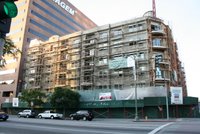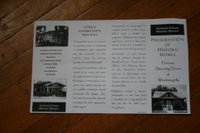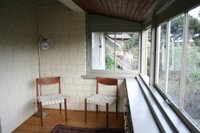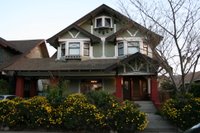Hoops and Hallways
 The National Basketball Association draft was held last Thursday and the Los Angeles Clippers chose Indiana freshman Eric Gordon with the #7 pick. I liked the selection of Gordon, but the player I really coveted, Texas point guard D.J. Augustin was drafted two slots later by the Charlotte Bobcats. Why Augustin? Because he's relatively small, an inch or two under six feet and probably around a buck-sixty eight; and, I think small is always underrated.
The National Basketball Association draft was held last Thursday and the Los Angeles Clippers chose Indiana freshman Eric Gordon with the #7 pick. I liked the selection of Gordon, but the player I really coveted, Texas point guard D.J. Augustin was drafted two slots later by the Charlotte Bobcats. Why Augustin? Because he's relatively small, an inch or two under six feet and probably around a buck-sixty eight; and, I think small is always underrated.People fall in love with size, be it basketball prospects or real estate. Hey, square footage is square footage, and I wouldn't necessarily kick it out of bed; but, nothing beats a good floor plan (or floor general). Most can note the obvious waste, labyrinthian hallways, oversized landings, or bloated foyers; but, often the space kept clear to allow the passage of people is what's most limiting.
 Just as some NBA teams are "going small", the AIA (American Institute of Architects) report a downsizing trend in new home construction, inspired by sustainable design principles, the housing slowdown, emerging weakness in the national economy, and a growing "Hummer house" backlash. Some municipalities have begun to impose restrictions on height and adopt tough lot coverage ratios as well.
Just as some NBA teams are "going small", the AIA (American Institute of Architects) report a downsizing trend in new home construction, inspired by sustainable design principles, the housing slowdown, emerging weakness in the national economy, and a growing "Hummer house" backlash. Some municipalities have begun to impose restrictions on height and adopt tough lot coverage ratios as well.Of course criticism of large homes isn't new, it occurred during the Gilded Age too; and now, as we stand on the edge of another cultural precipice, perhaps we'll come to appreciate the Augustins and Iversons and the T.J. Fords, as much as we do the Yao Mings and the Shaq O'Neals.
Labels: sports























